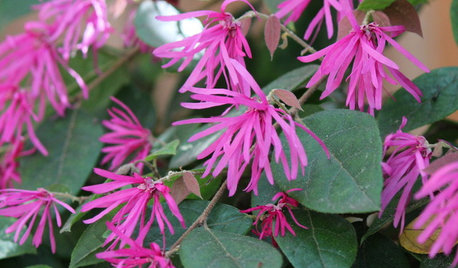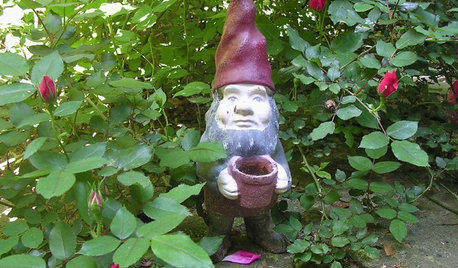Virused?? Pink Diamond??
dondeldux z6b South Shore Massachusetts
12 years ago
Related Stories

TRIMShutter Cutouts: A Window to One's Soul?
To settle on the perfect shape for this simple detail, follow your heart — or diamond, or maple leaf
Full Story
FLOWERSGreat Design Plant: Fringe Flower's Star Rises
Thank plant breeders for all the exciting new variations of this useful and easygoing flowering shrub
Full Story
KITCHEN DESIGNKitchen of the Week: Navy and Orange Offer Eclectic Chic in California
Daring color choices mixed with a newly opened layout and an artful backsplash make for personalized luxury in a San Francisco kitchen
Full Story
DECORATING GUIDESAdd Geometric Rugs for Instant Energy
A powerfully patterned rug is all you need to wake up a snoozy room design
Full Story
PATTERNArgyle Chic Crosses From Clothes to the Home
Making a dash from socks and sweaters, this pattern adds unexpected style to walls, accessories and even landscapes
Full Story
EDIBLE GARDENSSummer Crops: How to Grow Tomatoes
Plant tomato seedlings in spring for one of the best tastes of summer, fresh from your backyard
Full Story
Houzz Call: Show Us Your Garden Gnomes
These decorative little German characters are popular again. Share a photo of yours, and it might appear in a featured ideabook
Full Story
KITCHEN DESIGN9 Creative Looks for Kitchen Cabinets
When plain cabinet finishes just won’t cut it, consider these elegant to inventive approaches
Full Story
DECORATING GUIDES10 Ways to Update a Victorian Living Room
Bring your period living room sensitively into the 21st century with these simple yet effective design tricks
Full Story
COLORFUL HOMESHouzz Tour: Color Lights the Way in a Tennessee Home
A 1960s rancher takes on a new attitude with a second story and vivid hues
Full StoryMore Discussions






blancawing
dondeldux z6b South Shore MassachusettsOriginal Author
Related Professionals
Danbury Landscape Architects & Landscape Designers · La Marque Landscape Architects & Landscape Designers · Rancho Cordova Landscape Architects & Landscape Designers · Allentown Landscape Contractors · Edmond Landscape Contractors · Hartford Landscape Contractors · Corona Landscape Contractors · Davis Landscape Contractors · Mount Sinai Landscape Contractors · Norristown Landscape Contractors · Paramus Landscape Contractors · Tewksbury Landscape Contractors · Yuba City Landscape Contractors · Burleson Swimming Pool Builders · Sacramento Swimming Pool Buildersblancawing
npublici
dragonstone
jackie_o
joshy46013
jackie_o
mariava7
brigarif Khan
dondeldux z6b South Shore MassachusettsOriginal Author
sun_worshiper
dondeldux z6b South Shore MassachusettsOriginal Author
sun_worshiper
npublici
sun_worshiper
jackie_o
joshy46013
jackie_o
dondeldux z6b South Shore MassachusettsOriginal Author
jackie_o
mariava7
npublici
twizzlestick
sun_worshiper
salpal
brigarif Khan
joshy46013
jackie_o
joshy46013
dondeldux z6b South Shore MassachusettsOriginal Author
jackie_o
hippiezep
lenanen
sun_worshiper
npublici
twizzlestick
dangles
dondeldux z6b South Shore MassachusettsOriginal Author
sun_worshiper
Carol love_the_yard (Zone 9A Jacksonville, FL)
dondeldux z6b South Shore MassachusettsOriginal Author
Carol love_the_yard (Zone 9A Jacksonville, FL)
brigarif Khan
e36yellowm3
dondeldux z6b South Shore MassachusettsOriginal Author
kaboehm (zone 9a, TX USA)
dondeldux z6b South Shore MassachusettsOriginal Author
kaboehm (zone 9a, TX USA)
dondeldux z6b South Shore MassachusettsOriginal Author